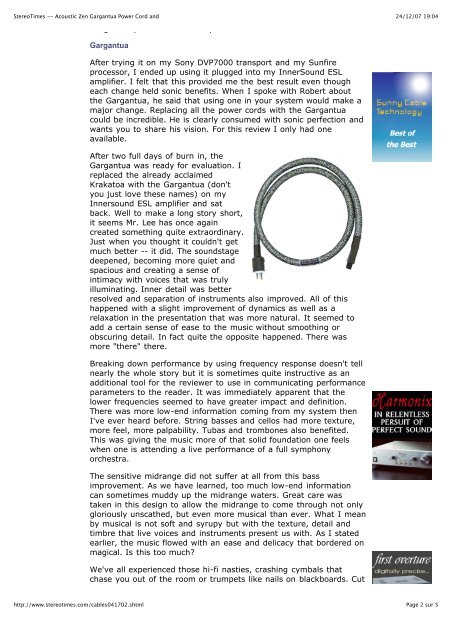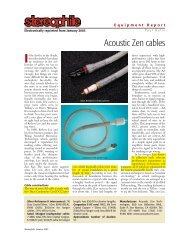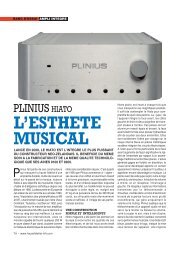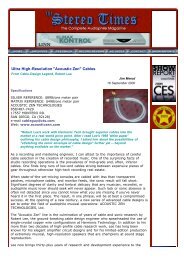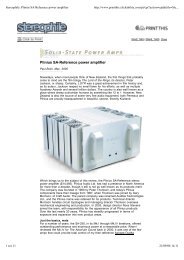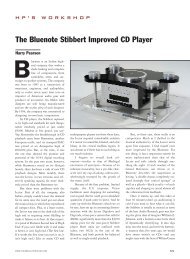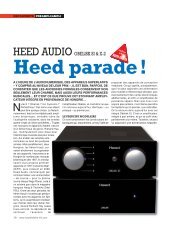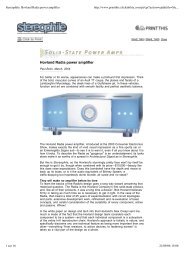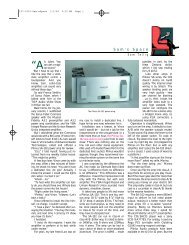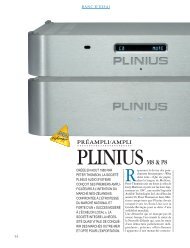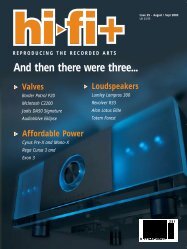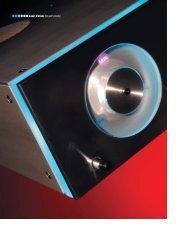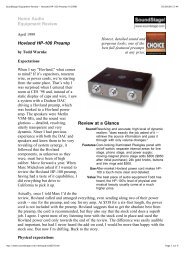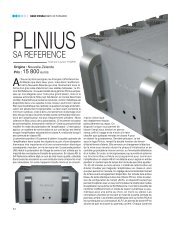StereoTimes -- Acoustic Zen Gargantua Power ... - Jason Diffusion
StereoTimes -- Acoustic Zen Gargantua Power ... - Jason Diffusion
StereoTimes -- Acoustic Zen Gargantua Power ... - Jason Diffusion
You also want an ePaper? Increase the reach of your titles
YUMPU automatically turns print PDFs into web optimized ePapers that Google loves.
<strong>StereoTimes</strong> -- <strong>Acoustic</strong> <strong>Zen</strong> <strong>Gargantua</strong> <strong>Power</strong> Cord and<strong>Gargantua</strong> power cord came up first.24/12/07 19:04<strong>Gargantua</strong>After trying it on my Sony DVP7000 transport and my Sunfireprocessor, I ended up using it plugged into my InnerSound ESLamplifier. I felt that this provided me the best result even thougheach change held sonic benefits. When I spoke with Robert aboutthe <strong>Gargantua</strong>, he said that using one in your system would make amajor change. Replacing all the power cords with the <strong>Gargantua</strong>could be incredible. He is clearly consumed with sonic perfection andwants you to share his vision. For this review I only had oneavailable.After two full days of burn in, the<strong>Gargantua</strong> was ready for evaluation. Ireplaced the already acclaimedKrakatoa with the <strong>Gargantua</strong> (don'tyou just love these names) on myInnersound ESL amplifier and satback. Well to make a long story short,it seems Mr. Lee has once againcreated something quite extraordinary.Just when you thought it couldn't getmuch better -- it did. The soundstagedeepened, becoming more quiet andspacious and creating a sense ofintimacy with voices that was trulyilluminating. Inner detail was betterresolved and separation of instruments also improved. All of thishappened with a slight improvement of dynamics as well as arelaxation in the presentation that was more natural. It seemed toadd a certain sense of ease to the music without smoothing orobscuring detail. In fact quite the opposite happened. There wasmore "there" there.Breaking down performance by using frequency response doesn't tellnearly the whole story but it is sometimes quite instructive as anadditional tool for the reviewer to use in communicating performanceparameters to the reader. It was immediately apparent that thelower frequencies seemed to have greater impact and definition.There was more low-end information coming from my system thenI've ever heard before. String basses and cellos had more texture,more feel, more palpability. Tubas and trombones also benefited.This was giving the music more of that solid foundation one feelswhen one is attending a live performance of a full symphonyorchestra.The sensitive midrange did not suffer at all from this bassimprovement. As we have learned, too much low-end informationcan sometimes muddy up the midrange waters. Great care wastaken in this design to allow the midrange to come through not onlygloriously unscathed, but even more musical than ever. What I meanby musical is not soft and syrupy but with the texture, detail andtimbre that live voices and instruments present us with. As I statedearlier, the music flowed with an ease and delicacy that bordered onmagical. Is this too much?We've all experienced those hi-fi nasties, crashing cymbals thatchase you out of the room or trumpets like nails on blackboards. Cuthttp://www.stereotimes.com/cables041702.shtmlPage 2 sur 5


